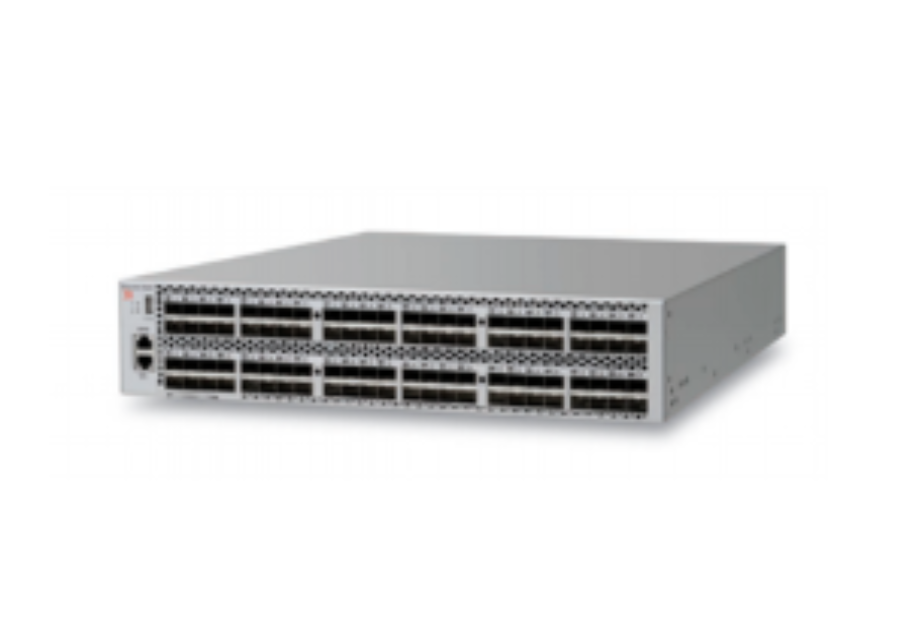The Brocade 6520 Switch is a high-performance Fibre Channel switch designed for enterprise SAN (Storage Area Network) environments. It offers exceptional scalability, reliability, and performance, making it ideal for data centers with demanding storage and connectivity needs. Below are its key specifications:
Brocade 6520 Switch Specifications
-
Port Configuration:
-
Offers up to 48 ports with the option to configure 16Gb, 32Gb, or 64Gb Fibre Channel speeds.
-
Supports both 10GbE and 40GbE Ethernet connectivity options for versatile networking.
-
-
Throughput:
-
Delivers up to 2.0 Tbps of total throughput.
-
-
Performance:
-
Non-blocking architecture ensures maximum bandwidth with low latency.
-
Optimized for high-performance storage, virtualization, and cloud environments.
-
-
High Availability & Redundancy:
-
Dual, redundant power supplies and cooling fans to ensure continuous, reliable operation.
-
Fast failover and recovery mechanisms minimize potential downtime.
-
-
Management & Monitoring:
-
Fully integrated with Brocade Network Advisor, offering simplified management, configuration, and monitoring.
-
Advanced automation features for efficient network management and operational consistency.
-
-
Reliability:
-
High-availability design with advanced error detection and self-healing capabilities.
-
Provides excellent Quality of Service (QoS) for traffic prioritization, ensuring high-priority workloads are handled efficiently.
-
-
Scalability:
-
Virtual Fabric technology allows for the creation of virtualized SAN networks, enhancing scalability and flexibility.
-
Seamless integration with existing Brocade SAN solutions for an optimized storage network.
-
-
Size:
-
1U standard rack-mounted form factor for efficient space usage in data centers.
-
-
Power Requirements:
-
AC and DC power input options, providing flexibility for different power setups.
-
Use Cases:
-
Enterprise-class storage area networks (SAN).
-
High-performance computing (HPC) environments.
-
Cloud infrastructure and virtualized environments.
-
Data centers requiring high scalability and robust network management.















